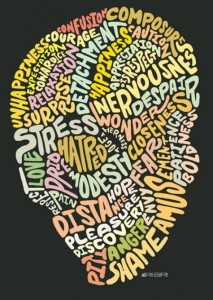How keeping your distance can get you closer to what you want
 “Step away from a problem,” “eyes on the horizon,” “a bird’s eye view,” “remove yourself from a situation,” “burn your bridges” – we have many expressions in English that indicate spatial and psychological distance. When we physically or mentally increase our distance from whatever we are dealing with, it changes how we perceive things and make decisions. Employing the mind trick of distance when you present or process information can result in greater impact and better decisions. This is not about distancing yourself from people, but rather finding your own “observer” or “distant self” that can help you connect better with people and ideas. Here are five ways to benefit from distance:
“Step away from a problem,” “eyes on the horizon,” “a bird’s eye view,” “remove yourself from a situation,” “burn your bridges” – we have many expressions in English that indicate spatial and psychological distance. When we physically or mentally increase our distance from whatever we are dealing with, it changes how we perceive things and make decisions. Employing the mind trick of distance when you present or process information can result in greater impact and better decisions. This is not about distancing yourself from people, but rather finding your own “observer” or “distant self” that can help you connect better with people and ideas. Here are five ways to benefit from distance:
1. Lean back to make a task seem easier. Increasing the physical distance from a complex task also increases the psychological distance. A task seen from a greater distance appears easier. After you present a problem, try moving the whiteboard away from the audience or have the audience members change their seats to increase the distance from the spot that represents the problem. It may boost abstract thinking and creativity. Taking a break can have a similar distancing effect.
2. Be a fly on the wall. Self-distancing can help people look at a negative experience with less anger and aggression. Rather than immersing yourself in a stressful situation, switch to the role of an observer. Replaying a negative scene as if watching the events unfold from a distance and happening to the “distant” you can buffer from the negative outcomes of rumination. Role-play is another form of self-distancing that encourages different perspectives. If you are a speaker or presenter, it is helpful to think about the appropriate level of self-immersion that you want to create for your audience. A distant perspective can help the audience deal better with topics that can trigger strong emotions and aggression.
3. Use the distance to bring your points across. When you tell a story, move with purpose to create a picture of your content. The action in your story should prompt your movement. Where can you place all your characters and everything else on the stage to create a sequence of scenes in your mind? You can bring your audience into the scenes by moving purposefully as your story progresses. Your movement can also create a timeline of the past, present and future. What is the sequence of the events that occur in your story? As you describe the sequential events, you move accordingly. Remember that your audience reads the timeline from left to right, so you should do it from their perspective (backwards for you). Apparently, the future feels closer to us than the past. This reduced psychological distance may help us better prepare for future events.
4. Match the psychological distance of your message with the timing of the decision. Gergan Nenkov of the Carroll School of Management in Boston investigated the persuasiveness of messages presented to consumers at different stages of decision-making process. Consumers in a predecisional mindset were more likely to be persuaded by psychologically distant messages that focused on the future and distant others. In contrast, consumers in a postdecisional mindset who looked for ways to support and implement their decision were more likely to be persuaded by messages that talked about the present and the self.
5. Keep it cool. There is a link between cold temperatures and social distance. For example, social isolation or emotionally chilly memories can actually make people feel cold. It turns out that cooler temperatures also reduce the so called “egocentric anchoring” when people unintentionally project their own perspective onto others. So, if you want to promote mutual understanding and perspective-taking behavior, keep the room temperature cooler.





